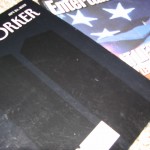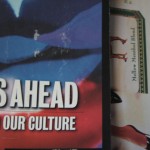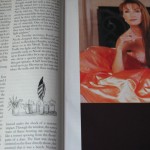What do you see now that you didn’t see then?
In the fall of 2001, I was working at the US Navy Museum in Washington, DC where we were on lockdown for many hours on September 11. I did not own a cell phone, but luckily I had been able to phone my mom and my brother before the phone lines were too jammed to be of use. I still remember how scared I was because of where I worked and because of –what turned out to be false — reports of explosions all across the District of Columbia. We could see the Pentagon burning from the Museum’s periscope. When I finally drove home, I could see and smell smoke from the Pentagon and was kept up for many nights as helicopters and F-14’s circled the area.
Eventually, I shared my story of what I saw then with the September 11 Digital Archive, not realizing that I would work on this project in 2011.
During the past few months, we at CHNM have focused on taking care of an aging digital archive that was groundbreaking at the time it launched in 2002. In 2002, most individuals were not regular users of the Web, nor were they as comfortable sharing personal materials online as they are today. And yet, people shared their hopes and fears through a simple contribution form making the September 11 Digital Archive, the world’s largest public collection of born-digital materials related to the events of September 11, 2001 with 150,000 items.
Our efforts at preservation are possible by a Saving America’s Treasures (SAT) grant, jointly-administered by the National Park Service and National Endowment for the Humanities, that will pay to transfer the aging collection to a more stable and standardized archival system. (Read more)This essential step will make the contents of the Archive more accessible to scholars, students, policy makers, and the general public in the coming years. We feel especially lucky to have received this grant because this federal grant program has been cut by Congress.
As I reviewed some of the Archive’s submissions and read this New York Times piece, “What did you Keep?”, I looked through my own collection. I found two magazines published in late September 2001.
I saved them because I assumed I would want to reflect and see what the writers of my favorite magazines, The New Yorker and Entertainment Weekly (I still subscribe to both), said in the aftermath of the attacks.What strikes me today is not the poignancy of Updike, Angell, or Sontag’s reflections, but of the fact that each magazine’s advertisements and advertisers seemed to carry on as if nothing happened. Ok, you might expect that from a pop culture magazine interested in the entertainment industry. But at the same time, this generally light magazine was tackling bigger questions about audiences long-term reactions to violent films, television news coverage, and scrapped movie scripts that included fictional plots about planes flying into the World Trade Center.
The New Yorker special issue contained its usual combination of Talk of the Town, non-fiction pieces, and images, mostly focused on the attacks, and its beloved New York. But, the issue lacked a piece of fiction–a seemingly deliberate editorial decision. Then, what of the advertising? Would the publishers have considered printing this one issue without advertising, such as the double-page Polo ad or Jane Seymour posing as a fan of the Mandarin?
Consumer purchasing was the way that we as citizen-consumers were urged by politicians to keep the nation in business after September 11 and it is much more visible than I had remembered. What I see now is influenced by scholars in the fields of memorialization and commemoration, such as Marita Sturken. In her book, Tourists of History she makes some wonderful observations about the conflicting relationships of consumers, patriotism, and remembrance in post-911 New York, especially through analyzing kitchy patriotic souvenirs, made in China, sold at Ground Zero.
What one thing do you see now that didn’t see then–looking backward or forward? Please share those thoughts with the Archive.



